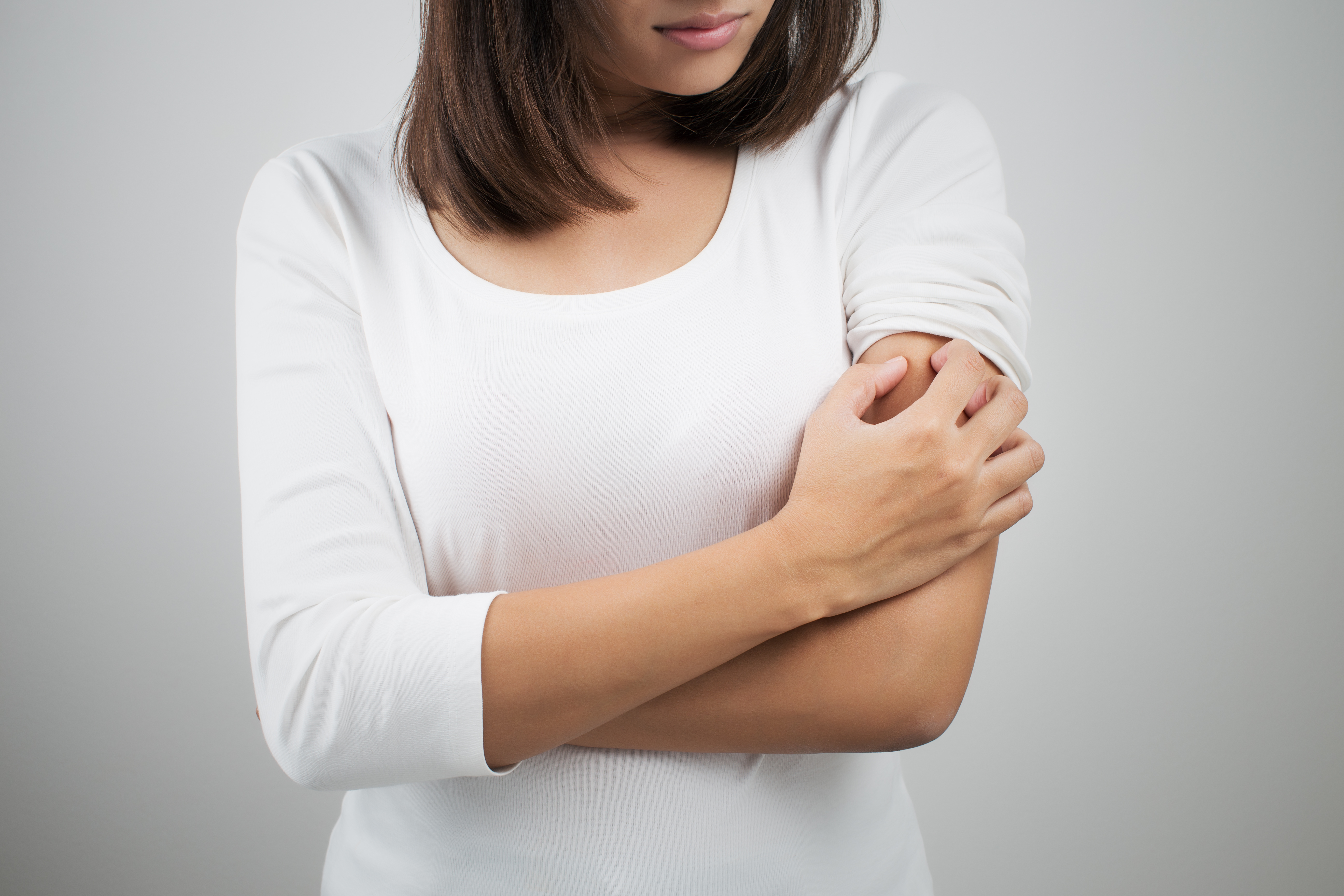DIAGNOSIS:
By answering these questions, diagnosis and treatment can be easily done by your doctor:
- What is the history of your rash, including:
- When did the rash start?
- Where did the rash start?
- Has the rash spread?
- Has the rash changed?
- Have you been in contact with anything that may have caused the rash?
- Have you been around anyone recently who has a similar rash?
- Has anything made the rash better or worse?
- Have you had this rash before? If yes:
- What were the circumstances?
- When did you last have it?
- How was it treated?
- How long did it last?
- What other symptoms have you had? Symptoms may include itching, burning, stinging, tingling, numbness, pain, or tenderness to the touch.
- Have you used a new food, medicine, or product, such as cosmetics, cleaning agents, detergents, soaps, chemicals, fabrics, lotions, or nonprescription medicines?
- Have you been exposed to poisonous plants. such as poison ivy, oak, or sumac?
- Have you had any other health problems during the past 3 months?
- Have you recently traveled to a rural area or to another country?
- Have you been under an unusual amount of stress at home, work, or both?
- Does anyone in your family have a skin disorder or an allergy? If so, to what?
- Are your shots and vaccines up-to-date?
- Do you have any symptoms of a sexually transmitted infection (STI)?
- What home treatment measures have you tried? Did they help?
- What nonprescription medicines have you tried? Did they help?
- Do you have any health risks?
RECOMMENDED MEDICATIONS
Most rashes will go away without medical treatment but home treatment can often relieve pain and itching.
Immediately wash the area with large amounts of water if you have come in contact with a substance such as poison ivy, oak, or sumac.
After a rash has developed, leave it alone as much as possible.
- Use soap and water sparingly.
- Leave the rash exposed to the air whenever possible.
- Do not scratch the rash.
Avoid contact with children or pregnant women if you have a rash. Some rashes can be caused by viral illnesses which may be highly infective through contact.
Relief from itching
- Keep the itchy area cool and moist. Put cloths soaked in ice water on the rash a few times a day.
- Keep cool, and stay out of the sun.
- Add a handful of oatmeal (ground to a powder) to your bath. Or you can try an oatmeal bath product, such as Aveeno.
- Avoid scratching as much as possible.
- Wear cotton clothing.
- Use gentle soaps, such as Basis, Cetaphil, Dove, or Oil of Olay, and use as little soap as possible.
- Wash your clothes with a mild soap, such as CheerFree or Ecover, rather than a detergent. Rinse twice to remove all traces of the soap. Do not use strong detergents.
- Do not let the skin become too dry.
- Take several breaks during the day to do a relaxation exercise, particularly before going to bed if stress appears to cause your itching or make it worse.
Nonprescription medicines for itching
Carefully read and follow all label directions on the medicine bottle or box.
- Try calamine lotion for a rash caused by contact dermatitis, such as poison ivy or poison oak rashes.
- For severe itching from contact dermatitis, apply hydrocortisone cream 4 times a day until the itch is gone. Do not use this cream on a fungal rash, because this can make the rash worse.
- Try an oral antihistamine to help the scratch-itch cycle. Examples include chlorpheniramine maleate, such as Chlor-Trimeton, and diphenhydramine, such as Benadryl. Oral antihistamines are helpful when itching and discomfort are preventing you from doing normal activities, such as work and sleep. Antihistamines may cause drowsiness. Don’t give antihistamines to your child unless you’ve checked with the doctor first.
Nonprescription medicines for fever or pain
Nonsteroidal anti-inflammatory drugs (NSAIDs) can be used. Examples such as paracetamol, ibuprofen, naproxen and aspirin.
| Safety tips |
| Be sure to follow these safety tips when you use a nonprescription medicine: |
- Carefully read and follow all directions on the medicine bottle and box.
- Do not take more than the recommended dose.
- Do not take a medicine if you have had an allergic reaction to it in the past.
- If you have been told to avoid a medicine, call your doctor before you take it.
- If you are or could be pregnant, do not take any medicine other than acetaminophen unless your doctor has told you to.
- Do not give aspirin to anyone younger than age 20 unless your doctor tells you to.
|
Symptoms to watch for during home treatment
Call your doctor if any of the following occur during home treatment:
- Other symptoms, such as a fever, feeling ill, or signs of infection, are severe or become worse.
- A rash lasts longer than 2 weeks.
- Symptoms become more severe or happen more often.


